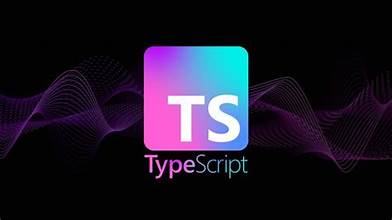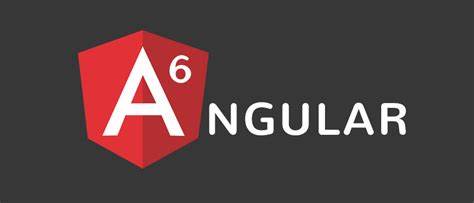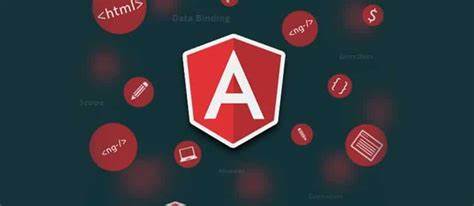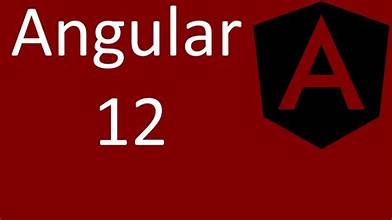Introduction
Overview of Typescript and ES6 JavaScript
- TypeScript Syntax
- Using the TypeScript transpiler
- Setting up Angular 6 and Typescript
Overview of Angular 6’s Parts
- Creating Components
- Databinding and String Interpolation
- Property Binding
- Event Binding
- Two-Way-Databinding
- Data Modelling
- Directives
- Bootstrapping
- Inputs & Outputs
- Angular CLI
Creating Your First Angular Application
- Planning the Application
- Setting Up an Angular Project and App Using the CLI
- Creating a Basic Project Setup Using Bootstrap 4 and Sass
Using Angular 6 Components
- Data Flow
- Working with AppModule
- Working with Custom Components
- Using Templates and Styles
- Using View Encapsulation
- Projecting Content
- Understanding Component Lifecycle and Lifecycle Hooks
- Using ViewChildren and ContentChildren
Databinding in Angular 6
- Overview of Property & Event Binding
- Binding and Assigning Aliases to Custom Properties
- Binding and Assigning Aliases to Custom Events
Working with Directives
- Built-in Directives
- Custom Directives
Angular 6 Services
- Creating a Logging Service
- Creating a Data Service
Using Dependency Injection and Providers
- Injectors, Provider, and Tokens
- Configuring Dependency Injection
- Configuring Your Provider
- Injecting Services into Components, Directives, and Services
Switching Pages with Routing
- Setting Up Routes
- Configuring and Loading Routes
- Understanding the Different Navigation Methods
- Using Parameters in Routes
- Creating Nested Routes
- Using Redirect and Wildcard Routes
- Understanding Route Guards
- Understanding Routing Strategies
Using RxJS to Create and Work with Observables in Angular
- Overview of Observables
- Overview of RxJS
- Building & Using Observables in Angular
Handling Forms
- Using the Template Driven Forms
- Using the Reactive Forms
Using Pipes
- Built-in Pipes
- Async Pipe
- Custom Pipes
Making Calls to External HTTP APIs
Using Angular Modules
Testing the Angular 6 Application
- Using Jasmine for unit testing
Debugging the Application
- Understanding Error Messages in Angular
- Using Sourcemaps to Debug Code in the Browser
- Using Augury
Optimizing the Angular 6 Application
Angular 6 Security
- Authentication
- What should and shouldn’t be written in Angular
Deploying an Angular 6 Application to Production
- Deploying to IIS, Apache, Nginx, etc.
Troubleshooting
Closing Remarks
Introduction
Overview of Typescript and ES6 JavaScript
- TypeScript Syntax
- Using the TypeScript transpiler
- Setting up Angular 7 and Typescript
Overview of Angular 7’s Parts
- Angular CLI
- Components
- Directives
- Inputs and Outputs
- Data Binding and Interpolation
- Event Binding
- Data Modelling
- Bootstrapping
Creating Your First Angular Application
- Planning the Application
- Setting Up an Angular Project
- Using Bootstrap 4 and Sass
Creating a Component
- Understanding the Component Lifecycle
- Data Flow
- Using Templates and Styles
- Projecting Content
- Working with AppModule
- Working with Custom Components
- Using View Encapsulation
- Implementing Lifecycle Hooks
- Using ViewChildren and ContentChildren
Data Binding in Angular 7
- Understanding Property and Event Binding
- Binding and Assigning Aliases to Custom Properties
- Binding and Assigning Aliases to Custom Events
Working with Directives
- Built-in Directives
- Custom Directives
Angular 7 Services
- Creating a Logging Service
- Creating a Data Service
Using Dependency Injection and Providers
- Injectors, Provider, and Tokens
- Configuring Dependency Injection
- Configuring Your Provider
- Injecting Services into Components, Directives, and Services
Switching Pages with Routing
- Understanding the Different Navigation Methods
- Routing Strategies
- Setting Up Routes
- Configuring and Loading Routes
- Using Parameters in Routes
- Creating Nested Routes
- Using Redirect and Wildcard Routes
- Understanding Route Guards
Using RxJS to Create and Work with Observables in Angular
- Overview of Observables
- Overview of RxJS
- Building & Using Observables in Angular
Generating Forms for User Input
- Using the Template Driven Forms
- Using the Reactive Forms
Using Pipes
- Built-in Pipes
- Async Pipe
- Custom Pipes
Making Calls to External HTTP APIs
Using Angular Modules
Testing the Angular 7 Application
- Using Jasmine for unit testing
Debugging the Application
- Understanding Error Messages in Angular
- Using Sourcemaps to Debug Code in the Browser
- Using Augury
Optimizing the Angular 7 Application
Angular 7 Security
- Authentication
- What should and shouldn’t be written in Angular
Deploying an Angular 7 Application to Production
- Deploying to IIS, Apache, Nginx, etc.
Troubleshooting
Introduction
- What is Angular?
- What’s new in Angular 9?
Overview of Typescript and ES6 JavaScript
- TypeScript Syntax
- Using the TypeScript transpiler
- Setting up Angular 9 and Typescript
Overview of Angular 9’s Parts
- Angular CLI
- Components
- Directives
- Inputs and Outputs
- Data Binding and Interpolation
- Event Binding
- Data Modelling
- Bootstrapping
Creating Your First Angular Application
- Planning the Application
- Setting Up an Angular Project
- Creating a mobile friendly UI using Bootstrap 4 and Sass
Creating a Component
- Understanding the Component Lifecycle
- Data Flow
- Using Templates and Styles
- Projecting Content
- Working with AppModule
- Working with Custom Components
- Using View Encapsulation
- Implementing Lifecycle Hooks
- Using ViewChildren and ContentChildren
Data Binding in Angular 9
- Understanding Property and Event Binding
- Binding and Assigning Aliases to Custom Properties
- Binding and Assigning Aliases to Custom Events
Working with Directives
- Built-in Directives
- Custom Directives
Angular 9 Services
- Creating a Logging Service
- Creating a Data Service
Using Dependency Injection and Providers
- Injectors, Provider, and Tokens
- Configuring Dependency Injection
- Configuring Your Provider
- Injecting Services into Components, Directives, and Services
Switching Pages with Routing
- Understanding the Different Navigation Methods
- Routing Strategies
- Setting Up Routes
- Configuring and Loading Routes
- Using Parameters in Routes
- Creating Nested Routes
- Using Redirect and Wildcard Routes
- Understanding Route Guards
Using RxJS to Create and Work with Observables in Angular
- Overview of Observables
- Overview of RxJS
- Building & Using Observables in Angular
Generating Forms for User Input
- Using the Template Driven Forms
- Using the Reactive Forms
- Creating custom validation
- Validating, filtering, and sanitizing form data
Using Pipes
- Transforming output
- Built-in Pipes
- Async Pipe
- Custom Pipes
Making Calls to External HTTP APIs
Using Angular Modules
Testing the Angular 9 Application
- Using Jasmine for unit testing
- Using Protractor for end-to-end testing
Debugging the Application
- Understanding Error Messages in Angular
- Using Sourcemaps to Debug Code in the Browser
- Reading TypeScript Compilor diagnostics
- Using Augury
Optimizing the Angular 9 Application
- Understanding the Ivy compiler, runtime, and renderer
- Reworking the code
- Reducing bundle size and eliminating dead-code
Angular 9 Security
- How authentication works
- Using JWT authentication
- What should and shouldn’t be written in Angular
Deploying an Angular 9 Application to Production
- Deploying to IIS, Apache, Nginx, etc.
Angular 9 Best Practices
Troubleshooting
Summary and Conclusion
Introduction
- What is Angular?
- What’s new in Angular 10?
Overview of Typescript and ES6 JavaScript
- TypeScript Syntax
- Using the TypeScript transpiler
- Setting up Angular 10 and Typescript
Overview of Angular 10’s Parts
- Angular CLI
- Components
- Directives
- Inputs and Outputs
- Data Binding and Interpolation
- Event Binding
- Data Modelling
- Bootstrapping
Creating Your First Angular Application
- Planning the Application
- Setting Up an Angular Project
- Creating a mobile friendly UI using Bootstrap 4 and Sass
Creating a Component
- Understanding the Component Lifecycle
- Data Flow
- Using Templates and Styles
- Projecting Content
- Working with AppModule
- Working with Custom Components
- Using View Encapsulation
- Implementing Lifecycle Hooks
- Using ViewChildren and ContentChildren
Data Binding in Angular 10
- Understanding Property and Event Binding
- Binding and Assigning Aliases to Custom Properties
- Binding and Assigning Aliases to Custom Events
Working with Directives
- Built-in Directives
- Custom Directives
Angular 10 Services
- Creating a Logging Service
- Creating a Data Service
Using Dependency Injection and Providers
- Injectors, Provider, and Tokens
- Configuring Dependency Injection
- Configuring Your Provider
- Injecting Services into Components, Directives, and Services
Switching Pages with Routing
- Understanding the Different Navigation Methods
- Routing Strategies
- Setting Up Routes
- Configuring and Loading Routes
- Using Parameters in Routes
- Creating Nested Routes
- Using Redirect and Wildcard Routes
- Understanding Route Guards
Using RxJS to Create and Work with Observables in Angular
- Overview of Observables
- Overview of RxJS
- Building & Using Observables in Angular
Generating Forms for User Input
- Using the Template Driven Forms
- Using the Reactive Forms
- Creating custom validation
- Validating, filtering, and sanitizing form data
Using Pipes
- Transforming output
- Built-in Pipes
- Async Pipe
- Custom Pipes
Making Calls to External HTTP APIs
Using Angular Modules
Testing the Angular 10 Application
- Using Jasmine for unit testing
- Using Protractor for end-to-end testing
Debugging the Application
- Understanding Error Messages in Angular
- Using Sourcemaps to Debug Code in the Browser
- Reading TypeScript Compilor diagnostics
- Using Augury
Optimizing the Angular 10 Application
- Reworking the code
- Reducing bundle size and eliminating dead-code
Angular 10 Security
- How authentication works
- Using JWT authentication
- What should and shouldn’t be written in Angular
Deploying an Angular 10 Application to Production
- Deploying to IIS, Apache, Nginx, etc.
Angular 10 Best Practices
Troubleshooting
Summary and Conclusion
Introduction
- What is Angular?
- What’s new in Angular 11?
Overview of Typescript and ES6 JavaScript
- TypeScript Syntax
- Using the TypeScript transpiler
- Setting up Angular 11 and Typescript
Overview of Angular 11’s Parts
- Angular CLI
- Components
- Directives
- Inputs and Outputs
- Data Binding and Interpolation
- Event Binding
- Data Modelling
- Bootstrapping
- Experimental Webpack
Creating Your First Angular Application
- Planning the Application
- Setting Up an Angular Project
- Creating a mobile friendly UI using Bootstrap 4 and Sass
Creating a Component
- Understanding the Component Lifecycle
- Data Flow
- Using Templates and Styles
- Projecting Content
- Working with AppModule
- Working with Custom Components
- Using View Encapsulation
- Implementing Lifecycle Hooks
- Using ViewChildren and ContentChildren
Data Binding in Angular 11
- Understanding Property and Event Binding
- Binding and Assigning Aliases to Custom Properties
- Binding and Assigning Aliases to Custom Events
Working with Directives
- Built-in Directives
- Custom Directives
Angular 11 Services
- Creating a Logging Service
- Creating a Data Service
Using Dependency Injection and Providers
- Injectors, Provider, and Tokens
- Configuring Dependency Injection
- Configuring Your Provider
- Injecting Services into Components, Directives, and Services
Switching Pages with Routing
- Understanding the Different Navigation Methods
- Routing Strategies
- Setting Up Routes
- Configuring and Loading Routes
- Using Parameters in Routes
- Creating Nested Routes
- Using Redirect and Wildcard Routes
- Understanding Route Guards
Using RxJS to Create and Work with Observables in Angular
- Overview of Observables
- Overview of RxJS
- Building & Using Observables in Angular
Generating Forms for User Input
- Using the Template Driven Forms
- Using the Reactive Forms
- Creating custom validation
- Validating, filtering, and sanitizing form data
Using Pipes
- Transforming output
- Built-in Pipes
- Async Pipe
- Custom Pipes
Making Calls to External HTTP APIs
Testing the Angular 10 Application
- Using Jasmine for unit testing
- Using Protractor for end-to-end testing
Debugging the Application
- Understanding Error Messages in Angular
- Using Sourcemaps to Debug Code in the Browser
- Reading TypeScript Compilor diagnostics
- Using Augury
Optimizing the Angular 11 Application
- Reworking the code
- Reducing bundle size and eliminating dead-code
Angular 11 Security
- How authentication works
- Using JWT authentication
- What should and shouldn’t be written in Angular
Deploying an Angular 11 Application to Production
- Deploying to IIS, Apache, Nginx, etc.
Angular 11 Best Practices
Troubleshooting
Summary and Conclusion
Introduction
- What is Angular?
- What’s new in Angular 12?
Overview of Typescript and ES6 JavaScript
- TypeScript Syntax
- Using the TypeScript transpiler
- Setting up Angular 12 and Typescript
Overview of Angular 12’s Parts
- Angular CLI
- Components
- Directives
- Inputs and Outputs
- Data Binding and Interpolation
- Event Binding
- Data Modelling
- Bootstrapping
- Experimental Webpack
Creating Your First Angular Application
- Planning the Application
- Setting Up an Angular Project
- Creating a mobile friendly UI using Bootstrap 4 and Sass
Creating a Component
- Understanding the Component Lifecycle
- Data Flow
- Using Templates and Styles
- Projecting Content
- Working with AppModule
- Working with Custom Components
- Using View Encapsulation
- Implementing Lifecycle Hooks
- Using ViewChildren and ContentChildren
Data Binding in Angular 12
- Understanding Property and Event Binding
- Binding and Assigning Aliases to Custom Properties
- Binding and Assigning Aliases to Custom Events
Working with Directives
- Built-in Directives
- Custom Directives
Angular 12 Services
- Creating a Logging Service
- Creating a Data Service
Using Dependency Injection and Providers
- Injectors, Provider, and Tokens
- Configuring Dependency Injection
- Configuring Your Provider
- Injecting Services into Components, Directives, and Services
Switching Pages with Routing
- Understanding the Different Navigation Methods
- Routing Strategies
- Setting Up Routes
- Configuring and Loading Routes
- Using Parameters in Routes
- Creating Nested Routes
- Using Redirect and Wildcard Routes
- Understanding Route Guards
Using RxJS to Create and Work with Observables in Angular
- Overview of Observables
- Overview of RxJS
- Building & Using Observables in Angular
Generating Forms for User Input
- Using the Template Driven Forms
- Using the Reactive Forms
- Creating custom validation
- Validating, filtering, and sanitizing form data
Using Pipes
- Transforming output
- Built-in Pipes
- Async Pipe
- Custom Pipes
Making Calls to External HTTP APIs
Testing the Angular 12 Application
- Using Jasmine for unit testing
- Exploring Protractor alternatives for end-to-end testing
Debugging the Application
- Understanding Error Messages in Angular
- Using Sourcemaps to Debug Code in the Browser
- Reading TypeScript Compilor diagnostics
- Using Augury to debug inside a browser
Optimizing the Angular 12 Application
- Reworking the code
- Reducing bundle size and eliminating dead-code
Angular 12 Security
- How authentication works
- Using JWT authentication
- What should and shouldn’t be written in Angular
Deploying an Angular 12 Application to Production
- Deploying to IIS, Apache, Nginx, etc.
Angular 12 Best Practices
Troubleshooting
Summary and Conclusion
Introduction
- Overview of Angular
- Understanding the Angular framework and architecture
- Understanding the anatomy of an Angular application
- What’s new in Angular 13?
Fundamentals of TypeScript
- Understanding the TypeScript syntax
- Defining variables and arrays
- Type in functions
Building Components
- Overview of components
- Creating a component using Angular CLI
- Understanding the component class
- Using a component template
- Event Binding
Working with Angular Forms
- Introduction to forms
- Using template-driven forms
- Importing forms module
- Setting up a form
- Overview of reactive forms
- Importing reactive forms module
- Constructing a form
- Designing the template
Services, Dependency Injection, and Pipes
- Overview of service
- Creating a basic service
- Understanding service class
- Introduction to dependency injection
- Injecting a service instance
- Introduction to pipes
- Using built-in pipes
- Using pipes in HTML template
- Chaining pipes
Working with HTTP Client
- Angular HTTP client
- Using the HHTP client
- Importing HTTP client module
- HTTP client request options
- Returning an HTTP response object
- Setting request headers
- Creating a new and simple observable
Angular Component Router
- Introduction to the Angular component router
- Navigating view
- Using the Angular router API
- Creating a router-enabled application
- Hosting router components
Implementing Micro-Frontend Architecture with Angular
- Overview of micro-frontend
- Advantages and features of micro-frontend
- Understanding the different approaches to micro-frontend
- Understanding the micro-frontend framework
- Creating micro-frontend projects with Angular
Testing Angular Applications
- Unit testing Angular artifacts
- Using testing tools
- Testing steps
Summary and Next Steps
Typescript basics for automation using WebdriverIO
Requirements
Description
Looking to learn Typescript/Javascript before learn WebdriverIO??
Are you looking to learn latest test automation frameworks?
Do you want to learn how to automation React, Angular based web applications?
You can start with basics of typescript here and that will prepare a base for you to learn test automation using WebdriverIO (jasmine, cucumber or movha/chai).
Happy Learning!
Kamal
Who this course is for:
- Beginners who want to learn automation using WebdriverIO and Typescript
Course content
1 section • 8 lectures • 40m total length
Basics of Typescript8 lectures • 40min
- Introduction02:52
- Data Types02:48
- Variables03:20
- Operators07:52
- Conditional statements03:52
- Loops05:52
- Functions08:34
- Anonymous, Lambda(arrow) functions05:13




